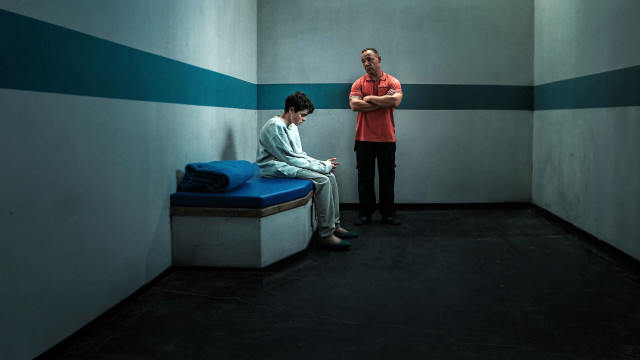





























See Also
See Again
© Shutterstock
0 / 30 Fotos
Seek shelter under a tree
- Seeking shelter during a storm is a sensible decision, but standing beneath a tree is ill-advised. Trees, being the tallest objects in the vicinity, are susceptible to lightning strikes. As humans conduct electricity more efficiently than trees, the electrical charge may transfer to you. Consequently, it is best to avoid seeking refuge under trees.
© Shutterstock
1 / 30 Fotos
Forget the 30-30 rule
- When observing lightning, it is recommended to count to 30. If thunder is heard before reaching 30, it is advisable to seek shelter indoors.
© Shutterstock
2 / 30 Fotos
Stay on the patio to watch
- The National Weather Service advises individuals to avoid balconies, porches, and open garages, dugouts, or sheds for their safety.
© Shutterstock
3 / 30 Fotos
Remain close together in a group
- According to the CDC (Centers for Disease Control and Prevention), staying together during a storm is risky due to ground currents and side flashes between people. Therefore, separating from the group can actually reduce the number of individuals exposed to potential harm.
© Shutterstock
4 / 30 Fotos
Have a shower
- Lightning can pass through water pipes during a storm and pose an electrical danger when you are showering.
© Shutterstock
5 / 30 Fotos
Overlook flooding
- Just six inches of fast-moving water can reportedly knock you down, and one foot of moving water can sweep your vehicle away. Don't underestimate the power of a seemingly shallow pool!
© Shutterstock
6 / 30 Fotos
Use a wired telephone
- The CDC advises against using corded landline phones during thunderstorms due to the risk of electric current passing through and causing harm. Cordless and mobile phones, however, are considered safe alternatives.
© Shutterstock
7 / 30 Fotos
Touch solid structures
- According to the CDC, it is important to avoid standing or leaning on concrete structures during lightning storms, as they often contain metal wires or bars.
© Shutterstock
8 / 30 Fotos
Stay in uncovered areas
- Standing under a tree offers no protection, and standing exposed should also be avoided. Although dancing in the rain may be enjoyable, remaining outside during a storm can be hazardous and potentially life-threatening.
© Shutterstock
9 / 30 Fotos
Seek shelter under an umbrella
- According to the CDC, the probability of getting struck by lightning is higher if you hold a conductor (like a metal object) above your shoulders.
© Shutterstock
10 / 30 Fotos
Stand by a window
- Even though thunderstorms are impressive to observe, it is crucial to remember that even staying indoors can be hazardous. Windows and doors may include metal components that can conduct electricity. Standing too close or touching them may put you at risk of electrocution.
© Shutterstock
11 / 30 Fotos
Operate electrical devices
- It's also recommended that you don't use your computer, TV, or other plugged-in electrical appliances, as lightning can travel through electrical systems and zap anything connected to an outlet.
© Shutterstock
12 / 30 Fotos
Disconnect your devices
- If the storm is already raging, unplugging devices increases your risk of electrocution. The safest way to contact someone during a storm is to use a smartphone, as long as it's not plugged in.
© Shutterstock
13 / 30 Fotos
Keep your pets outdoors
- Keeping your dog tied to a tree can be as risky as finding shelter under one. Doghouses don't offer much safety either. As a responsible owner, ensure your furry friend stays indoors to protect them.
© Shutterstock
14 / 30 Fotos
Go swimming
- Water, just like metal, has the ability to conduct electricity. Therefore, if you find yourself in a pool, lake, or any water source during a thunderstorm, you are exposing yourself to a significant risk of experiencing an electric shock.
© Shutterstock
15 / 30 Fotos
Lie on the floor
- According to the CDC, when lightning strikes, the tallest object is typically affected first. To stay safe, it is advisable to get low, but lying on the ground during a thunderstorm should be avoided. Even at a distance of 100 ft (30m), the electric current running along the surface of the ground can still be lethal.
© Shutterstock
16 / 30 Fotos
Lie on the floor
- If there is no shelter nearby, it is advised to crouch down, minimizing contact with the ground, and protect yourself by placing your hands over your ears and lowering your head.
© Shutterstock
17 / 30 Fotos
Spend time taking out metal
- According to the National Weather Service, metal conducts lightning but it does not always attract it. Therefore, when in a storm, instead of removing belts and watches, the main focus should be on seeking safety indoors.
© Shutterstock
18 / 30 Fotos
Forget where you keep your flashlight
- Ensure you have a flashlight or battery-powered lantern readily available in case of a power outage. Don't be caught in the dark during a storm.
© Shutterstock
19 / 30 Fotos
Wash your hands
- Sorry germophobes, but both metal pipes and water can conduct electricity, so running the tap runs the risk of being electrocuted.
© Shutterstock
20 / 30 Fotos
Hesitate to help someone who was hit
- One myth that the NWS (National Weather Service) debunked is that a lightning victim can shock others. Human bodies can't store electricity, so if you come in contact with someone who was hit by lightning, you won’t be electrocuted. Make sure they're breathing, elevate their legs slightly, and call for help.
© Shutterstock
21 / 30 Fotos
Ride your bicycle
- Protect yourself when riding a bicycle or motorcycle by pulling over and waiting for 30 minutes after the last sound of thunder before continuing your journey, even if you're almost home.
© Shutterstock
22 / 30 Fotos
Finish the game
- According to the CDC (Centers for Control Disease and Prevention) approximately 66% of storm-related fatalities are linked to outdoor recreational activities such as sports games. Observing lightning, hearing thunder, or perceiving a potential danger in the sky serve as indicators to temporarily halt the game and seek shelter.
© Shutterstock
23 / 30 Fotos
Keep driving
- If you find yourself driving in a strong lightning storm, it's important to pull over and turn on your hazard lights. Avoid contact with any metal objects inside the car, such as the steering wheel, gear shift, and seat belt buckle.
© Shutterstock
24 / 30 Fotos
Ignore when your hair stands up
- The lower part of the storm carries a negative charge and seeks out positively charged objects to release its energy (via lightning). If your hair starts standing upright, it indicates your body's positive charge is in danger of attracting the negative charge. Take prompt action and get to a low position!
© Shutterstock
25 / 30 Fotos
Drive in a convertible
- During a thunderstorm, it is generally safe to be inside most cars since lightning typically travels along the exterior. However, a convertible, which is not entirely constructed of metal, is comparatively less safe.
© Shutterstock
26 / 30 Fotos
Be taken by surprise
- Monitor weather forecasts to stay informed about approaching storms. This will allow you to disconnect your appliances and prepare a well-equipped shelter for potential emergencies.
© Shutterstock
27 / 30 Fotos
Go outdoors right after a storm
- The CDC advises following the 30-30 rule, which suggests waiting for 30 minutes after hearing the last thunder before going outside again. This is a precautionary measure to ensure safety.
© Shutterstock
28 / 30 Fotos
Forget to report fallen power lines
- These sources remain dangerous and carry the risk of causing a fire.
© Shutterstock
29 / 30 Fotos
© Shutterstock
0 / 30 Fotos
Seek shelter under a tree
- Seeking shelter during a storm is a sensible decision, but standing beneath a tree is ill-advised. Trees, being the tallest objects in the vicinity, are susceptible to lightning strikes. As humans conduct electricity more efficiently than trees, the electrical charge may transfer to you. Consequently, it is best to avoid seeking refuge under trees.
© Shutterstock
1 / 30 Fotos
Forget the 30-30 rule
- When observing lightning, it is recommended to count to 30. If thunder is heard before reaching 30, it is advisable to seek shelter indoors.
© Shutterstock
2 / 30 Fotos
Stay on the patio to watch
- The National Weather Service advises individuals to avoid balconies, porches, and open garages, dugouts, or sheds for their safety.
© Shutterstock
3 / 30 Fotos
Remain close together in a group
- According to the CDC (Centers for Disease Control and Prevention), staying together during a storm is risky due to ground currents and side flashes between people. Therefore, separating from the group can actually reduce the number of individuals exposed to potential harm.
© Shutterstock
4 / 30 Fotos
Have a shower
- Lightning can pass through water pipes during a storm and pose an electrical danger when you are showering.
© Shutterstock
5 / 30 Fotos
Overlook flooding
- Just six inches of fast-moving water can reportedly knock you down, and one foot of moving water can sweep your vehicle away. Don't underestimate the power of a seemingly shallow pool!
© Shutterstock
6 / 30 Fotos
Use a wired telephone
- The CDC advises against using corded landline phones during thunderstorms due to the risk of electric current passing through and causing harm. Cordless and mobile phones, however, are considered safe alternatives.
© Shutterstock
7 / 30 Fotos
Touch solid structures
- According to the CDC, it is important to avoid standing or leaning on concrete structures during lightning storms, as they often contain metal wires or bars.
© Shutterstock
8 / 30 Fotos
Stay in uncovered areas
- Standing under a tree offers no protection, and standing exposed should also be avoided. Although dancing in the rain may be enjoyable, remaining outside during a storm can be hazardous and potentially life-threatening.
© Shutterstock
9 / 30 Fotos
Seek shelter under an umbrella
- According to the CDC, the probability of getting struck by lightning is higher if you hold a conductor (like a metal object) above your shoulders.
© Shutterstock
10 / 30 Fotos
Stand by a window
- Even though thunderstorms are impressive to observe, it is crucial to remember that even staying indoors can be hazardous. Windows and doors may include metal components that can conduct electricity. Standing too close or touching them may put you at risk of electrocution.
© Shutterstock
11 / 30 Fotos
Operate electrical devices
- It's also recommended that you don't use your computer, TV, or other plugged-in electrical appliances, as lightning can travel through electrical systems and zap anything connected to an outlet.
© Shutterstock
12 / 30 Fotos
Disconnect your devices
- If the storm is already raging, unplugging devices increases your risk of electrocution. The safest way to contact someone during a storm is to use a smartphone, as long as it's not plugged in.
© Shutterstock
13 / 30 Fotos
Keep your pets outdoors
- Keeping your dog tied to a tree can be as risky as finding shelter under one. Doghouses don't offer much safety either. As a responsible owner, ensure your furry friend stays indoors to protect them.
© Shutterstock
14 / 30 Fotos
Go swimming
- Water, just like metal, has the ability to conduct electricity. Therefore, if you find yourself in a pool, lake, or any water source during a thunderstorm, you are exposing yourself to a significant risk of experiencing an electric shock.
© Shutterstock
15 / 30 Fotos
Lie on the floor
- According to the CDC, when lightning strikes, the tallest object is typically affected first. To stay safe, it is advisable to get low, but lying on the ground during a thunderstorm should be avoided. Even at a distance of 100 ft (30m), the electric current running along the surface of the ground can still be lethal.
© Shutterstock
16 / 30 Fotos
Lie on the floor
- If there is no shelter nearby, it is advised to crouch down, minimizing contact with the ground, and protect yourself by placing your hands over your ears and lowering your head.
© Shutterstock
17 / 30 Fotos
Spend time taking out metal
- According to the National Weather Service, metal conducts lightning but it does not always attract it. Therefore, when in a storm, instead of removing belts and watches, the main focus should be on seeking safety indoors.
© Shutterstock
18 / 30 Fotos
Forget where you keep your flashlight
- Ensure you have a flashlight or battery-powered lantern readily available in case of a power outage. Don't be caught in the dark during a storm.
© Shutterstock
19 / 30 Fotos
Wash your hands
- Sorry germophobes, but both metal pipes and water can conduct electricity, so running the tap runs the risk of being electrocuted.
© Shutterstock
20 / 30 Fotos
Hesitate to help someone who was hit
- One myth that the NWS (National Weather Service) debunked is that a lightning victim can shock others. Human bodies can't store electricity, so if you come in contact with someone who was hit by lightning, you won’t be electrocuted. Make sure they're breathing, elevate their legs slightly, and call for help.
© Shutterstock
21 / 30 Fotos
Ride your bicycle
- Protect yourself when riding a bicycle or motorcycle by pulling over and waiting for 30 minutes after the last sound of thunder before continuing your journey, even if you're almost home.
© Shutterstock
22 / 30 Fotos
Finish the game
- According to the CDC (Centers for Control Disease and Prevention) approximately 66% of storm-related fatalities are linked to outdoor recreational activities such as sports games. Observing lightning, hearing thunder, or perceiving a potential danger in the sky serve as indicators to temporarily halt the game and seek shelter.
© Shutterstock
23 / 30 Fotos
Keep driving
- If you find yourself driving in a strong lightning storm, it's important to pull over and turn on your hazard lights. Avoid contact with any metal objects inside the car, such as the steering wheel, gear shift, and seat belt buckle.
© Shutterstock
24 / 30 Fotos
Ignore when your hair stands up
- The lower part of the storm carries a negative charge and seeks out positively charged objects to release its energy (via lightning). If your hair starts standing upright, it indicates your body's positive charge is in danger of attracting the negative charge. Take prompt action and get to a low position!
© Shutterstock
25 / 30 Fotos
Drive in a convertible
- During a thunderstorm, it is generally safe to be inside most cars since lightning typically travels along the exterior. However, a convertible, which is not entirely constructed of metal, is comparatively less safe.
© Shutterstock
26 / 30 Fotos
Be taken by surprise
- Monitor weather forecasts to stay informed about approaching storms. This will allow you to disconnect your appliances and prepare a well-equipped shelter for potential emergencies.
© Shutterstock
27 / 30 Fotos
Go outdoors right after a storm
- The CDC advises following the 30-30 rule, which suggests waiting for 30 minutes after hearing the last thunder before going outside again. This is a precautionary measure to ensure safety.
© Shutterstock
28 / 30 Fotos
Forget to report fallen power lines
- These sources remain dangerous and carry the risk of causing a fire.
© Shutterstock
29 / 30 Fotos
Stay safe: What not to do during a lightning storm
Know the risks: lightning dangers you might overlook
© Shutterstock
While the chances of being struck by lightning in a given year are extremely low - less than one in a million to be precise - there are still several factors that can increase your risk. Plus, as the number and magnitude of severe thunderstorms seem to be increasing with the rise of extreme climate change, it’s better to be safe than sorry.
It is important to be aware of not only the basic safety precautions for lightning and heavy rain that we all learn, but also the unexpected dangers that can put us at risk both outdoors and indoors. Lightning strikes can have serious consequences and are known to be one of the leading causes of weather-related deaths.
To ensure your safety during a storm, take a look at this gallery highlighting the things you should definitely avoid doing.
RECOMMENDED FOR YOU




































MOST READ
- Last Hour
- Last Day
- Last Week








